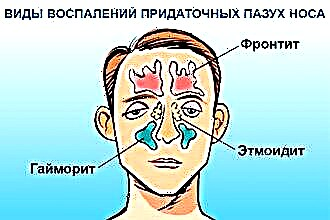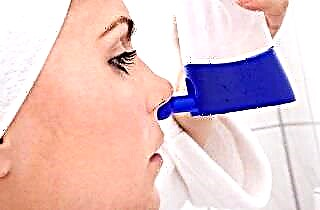Headache is a frequent companion of the common cold. It can be extremely painful; the inability to tolerate it often forces patients to take pain relievers in order to alleviate the condition. This symptom, no less than nasal congestion, disrupts performance, interferes with proper rest and sleep, and does not allow you to focus on anything but unpleasant sensations. Why does the head hurt with a runny nose? What factors provoke the appearance of pain syndrome and how to act to eliminate its symptoms?
 Headache with a runny nose is one of the most anticipated symptoms that has important diagnostic value. The more pronounced it is, the more likely it is that the patient needs urgent qualified help - self-medication is indispensable. At the same time, only a specialist can assess the degree of risk to health, identify the etiology of pain and runny nose, and prescribe treatment. The patient needs to imagine whether there is a connection between the headache and the release of pathological secretions from the nose.
Headache with a runny nose is one of the most anticipated symptoms that has important diagnostic value. The more pronounced it is, the more likely it is that the patient needs urgent qualified help - self-medication is indispensable. At the same time, only a specialist can assess the degree of risk to health, identify the etiology of pain and runny nose, and prescribe treatment. The patient needs to imagine whether there is a connection between the headache and the release of pathological secretions from the nose.
First you need to figure out what a headache is. This definition is understood as a feeling of discomfort and any type of pain that is localized in the head area; experts designate a headache by the term "cephalalgia". Cephalalgia is primary and secondary - in the first case, we are talking about migraines, tension headaches and cluster headaches. All of these pathologies are not associated with a runny nose or any other symptoms, manifest in the form of seizures, and often have a chronic course.
Secondary cephalalgia is called symptomatic, since it is explained by the presence of a specific pathological process:
- trauma;
- infections;
- inflammation in the region of the structures of the head and neck, etc.
Why does a headache appear with a runny nose? A combination of these symptoms can be a sign of conditions such as rhinitis and various types of sinusitis. Rhinitis is an inflammation of the mucous membrane of the nasal cavity, and with sinusitis, the paranasal, or paranasal sinuses (sinuses) are affected - maxillary, sphenoid, frontal, ethmoid.
Thus, the cephalalgia accompanying the runny nose is symptomatic, secondary in nature and depends on the variant of the pathological process.
Features of cephalalgia
Pain with a runny nose can be a manifestation of:
 Syndrome of general infectious intoxication.
Syndrome of general infectious intoxication.- Acute inflammation of the paranasal sinuses.
It is impossible to completely distinguish between these variants of cephalalgia, since all infectious and inflammatory processes, regardless of localization, are accompanied by one or another degree of infectious intoxication. However, each of them has its own peculiarities; it is also necessary to take into account external factors - for example, if a head hurts after a runny nose, this may be due to excessively active blowing of the nose.
Cephalalgia with intoxication
An infection that enters the body meets the resistance of the immune system; the onset of inflammation is inevitably accompanied by tissue damage and decay. Decay products as biologically active substances and toxins can irritate pain receptors and have an algogenic effect (provoke pain syndrome), and reduce the pain threshold. Headaches with a runny nose, as a rule, are accompanied by fever - an increased body temperature also contributes to the appearance and intensification of pain.
Pain with intoxication syndrome:
- diffuse, that is, scattered, without clear localization;
- may constantly or periodically increase in the area of the temples, occiput;
- may be accompanied by sensitivity to bright light, loud sounds;
- is stopped with the help of drugs.
Cephalalgia due to sinusitis
Its severity depends on the severity of the course of the disease. If hemisinusitis (unilateral inflammation of all sinuses) or pansinusitis (inflammation of all sinuses on both sides) is observed, it becomes diffuse, intensified by irritation of the pain points. Even if only a minor runny nose is present with sinusitis, the headache can be:
- One-sided or double-sided.
- With a tendency to increase at certain times of the day.
- So strong that the patient is unable to sleep.
Painful sensations also depend on which sinus the inflammatory process has arisen:
| The affected area | Sinusitis variant | Pain localization area | Peculiarities |
|---|---|---|---|
| Maxillary sinus | Sinusitis | Upper jaw, teeth, sometimes temples. | The pain increases in the evening, at first it is clearly localized, then it becomes diffuse. |
| Wedge-shaped sinus | Sphenoiditis | The upper part, the center of the head, the back of the head, as well as the ears, neck. | The pain is called "kaskoobrazny", it intensifies in the sun, in a hot room, at night. |
| Frontal sinus | Frontit | In the forehead, at the edge of the eyebrow. | It intensifies in the morning, when the head is tilted forward, combined with a feeling of pressure in the affected area. |
| Lattice sinus | Ethmoiditis | In the area of the bridge of the nose, the root of the nose, between the eyes, at the temples. | Has a pressing character, may be accompanied by lacrimation, swelling of the eyelids. |
Headache with sinusitis is caused by edema, impaired outflow of inflammatory exudate, irritation of sensitive nerve endings, and may increase in the supine position.
Headaches are not caused by a runny nose. What matters is, first of all, inflammatory edema - the mucous membrane becomes thicker, receptors are compressed, the outlet openings of the sinuses overlap. That is why the pain sensations increase with the accumulation of exudate and decrease when the natural drainage of the sinus is restored. If the outflow is not disturbed, the pain syndrome is weak or absent.
Non-drug methods
 What to do if you have a headache from a runny nose? There are several general recommendations, the implementation of which can partially alleviate the condition of patients:
What to do if you have a headache from a runny nose? There are several general recommendations, the implementation of which can partially alleviate the condition of patients:
- Bed rest during fever.
- Limiting physical activity, choosing a comfortable position in bed.
- A sufficient amount of liquid (tea, water, fruit drink) - this helps to moisturize the mucous membrane, helps to eliminate toxins.
If there is reason to suspect a purulent process, you cannot use thermal effects - both local, on the area of the nose and sinuses (bags of salt, inhalations), and systemic (warming in a bath, sauna). This can lead to the development of dangerous complications. The presence of purulent exudate can be indicated by a high body temperature, a significant deterioration in the general condition.
Symptomatic therapy
Treatment aimed at relieving the severity of a headache is called symptomatic. With its help, it is impossible to cure the disease - only to muffle unpleasant manifestations for a certain period of time. However, symptomatic remedies are necessary to eliminate painful symptoms and improve the patient's quality of life; if used correctly, they complement the complex therapy scheme and are presented:
- non-steroidal anti-inflammatory drugs (NSAIDs);
- vasoconstrictor drugs (topical decongestants).
NSAIDs (Paracetamol, Nurofen, Ibuprofen) are needed if the patient has a cold, high body temperature (more than 38-38.5 ° C), severe headache, since they have the effect of:
- antipyretic (antipyretic);
- analgesic (pain reliever).
They are used symptomatically (with an increase in fever, to relieve pain) within the age range of dosage, taking into account contraindications. If you have a headache with a runny nose due to general intoxication syndrome, these drugs quickly relieve the condition.
Decongestants are intended for:
- Reducing the severity of inflammatory edema.
- Restoration of natural drainage of the paranasal sinuses.
- Expansion of the nasal passages, improvement of nasal breathing.
Since the head may ache due to the "blockage" of the sinus anastomoses, disturbances in the outflow of exudate, vasoconstrictors (Phenylephrine, Otrivin) are widely used in the treatment of sinusitis. They are characterized by rapid action, but the disadvantage is the rapid development of the phenomenon of tachyphylaxis (the need to increase the dose to obtain an effect), the risk of medication rhinitis. Therefore, it is not recommended to use decongestants for more than 7-10 days; the drugs have contraindications; without a doctor's prescription, they cannot be used to treat children.
It is impossible to treat only a headache with a runny nose; it is necessary to eliminate the immediate cause - inflammation, that is, rhinitis or sinusitis.
Complex therapy
In the treatment of diseases that accompany a runny nose and headache, the following are used:
- pharmacological preparations;
- irrigation therapy;
- invasive manipulations.
Pharmacological preparations are administered systemically (tablets, injections) and topically (drops, sprays, solutions for rinsing the nose). Depending on the type of disease, a decision is made to use antibiotic therapy (Amoxicillin, Zinnat). Its duration for sinusitis is 7 to 14 days. Rhinitis usually does not require antibiotics, as it is most often viral in nature.
Means for local use are represented by decongestants, immunomodulators (IRS-19), mucoactive drugs (N-acetylcysteine). Irrigation therapy involves rinsing the nose with isotonic sodium chloride solution, preparations based on seawater (Aqualor, Marimer), and is indicated for different types of rhinitis.
Invasive manipulations may be required for sinusitis and include puncture (piercing with a special needle), probing and drainage of the paranasal sinus. This method is used to remove accumulated secretions (which will reduce the pressure in the sinus and thereby eliminate cephalalgia), rinsing with an antiseptic solution and administering the necessary medicines.
Treatment of headache with a common cold should be focused on eliminating the primary cause of the onset of symptoms. If you fight only with cephalalgia, there is a risk of complications, the transition of inflammation to a chronic form. A therapist, otolaryngologist (ENT doctor) can conduct an examination and prescribe treatment.

 Syndrome of general infectious intoxication.
Syndrome of general infectious intoxication.

